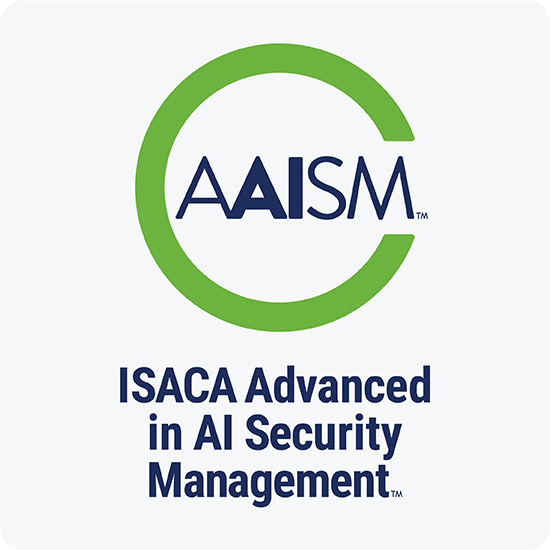



As a cybersecurity professional with a wall full of certifications, I never thought I’d be adding another. But here I am, deep in the weeds of Advanced in AI Security Management (AAISM), and let me tell you – this one is different.
We’re not talking about just another cloud, audit, or risk cert. AI has changed the rules, and as defenders, we need to evolve with it.
Traditional systems are predictable. AI systems are not. With AI, the code and the data are inseparable, and that makes risk management significantly more complex.
Mess with the data, and you can manipulate the outcome. Feed a model biased, incomplete, or adversarial input, and it can hallucinate, discriminate, or even fail silently. You can't fix that with a patch—you often have to retrain the entire model, assuming you even have access to the data and consent to use it.
ISACA’s AAISM is the first and only AI-centric security management certification, designed specifically to help experienced IT professionals manage the unique risks introduced by artificial intelligence. It empowers you to reinforce your enterprise’s security posture and protect against AI-specific threats that traditional tools and training don’t fully address.
Through the AAISM, you gain the ability to ensure responsible and effective use of AI across the organization. This isn’t just about securing infrastructure—it’s about securing the intelligence itself.
How AI Changes the Rules for Cybersecurity Professionals
AI introduces a whole new language of risk mostly based on statistics: underfitting, overfitting, regression, model drift, data poisoning, algorithm locking, and more.
For example: If fraud patterns shift from lots of small transactions to a few high-value ones, how does your AI respond? Does it adapt? Or does it fail silently because it was trained on yesterday’s data?
Then there’s algorithm locking. Regulated industries like finance or healthcare need deterministic systems but are suddenly dealing with GenAI models that can generate different answers to the same input. That’s not a glitch – it’s how they are designed.
As security professionals, we can’t treat AI like another app or endpoint. It’s far more dynamic—and far more human-like.
Just as we’ve learned to understand enough about application development to evaluate SAST, DAST, and DevSecOps pipelines, we now need to learn how models work—at a conceptual level. We don’t need to code them, but we do need to understand how they can be attacked, manipulated, and misaligned.
MITRE ATLAS, the threat framework built specifically for AI, didn’t emerge as an extension of MITRE ATT&CK. It was born because the old frameworks simply weren’t enough. AI required its own playbook.
The Future of Cybersecurity: Embracing AI’s Transformative Potential
The world is divided into two distinct populations: the AI is just hype about a tool crowd and the AI will be as transformative as the Internet was crowd. I personally believe AI is not just a tool and that it will transform our entire world—AI is a shifting, learning, and often unpredictable entity that is moving at the speed of light. Forget “there is an app for that,” now it is there is an AI that is fine-tuned for that, ranging from creating websites for you to making videos. We have barely come to grips with generative AI and already agentic AI is being released. And as its adoption accelerates and AI evolves further, so do the risks.
The AAISM certification gave me the structure, vocabulary, and strategic insight I needed to meaningfully contribute to AI security conversations—and lead them. It’s not just another checkbox. It’s a mindset shift for modern cybersecurity.
I didn’t take the AAISM because I needed another cert. I took it because I needed to stay ahead of the curve—and because the future of cybersecurity now depends on how well we understand and manage artificial intelligence.
